#House of Tudor
Text
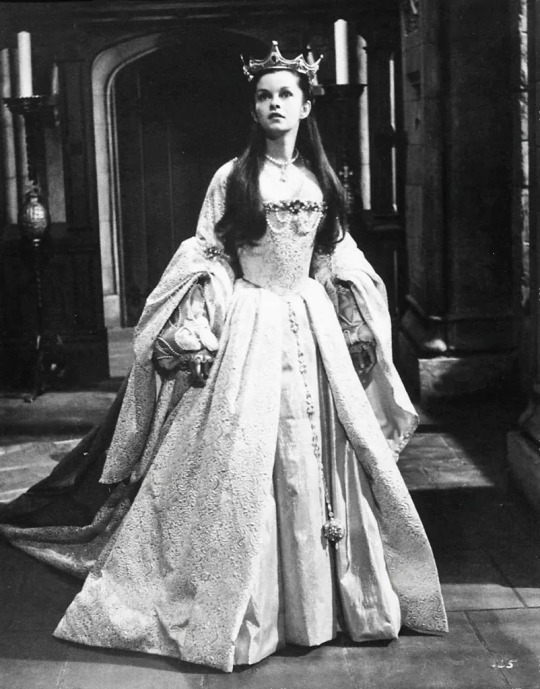
Genevieve Bujold as Anne Boleyn in Anne of the Thousand Days
#anne boleyn#queen anne boleyn#anne of the thousand days#genevieve bujold#tudor history#henry viii#the tudors#english history#tudor era#tudor period#tudor dynasty#tudor england#tudor rose#house of tudor#vintage movies#vintage films#1960s cinema#1960s movies#period film#period drama#costume drama#period piece#vintage
646 notes
·
View notes
Note
Can you do Yandere King Henry Viii and Yandere Charles brandon (they are both married) where both are in a ploy relationship with Mistress Reader?

Hello. I hope you like it.
" Scenario"
In fact, these two men are good friends. Honestly, there are many possibilities as to how you met. There may be several reasons why you started a multiple relationship.
Maybe you were the first Charles' lover. He was either forced to share it with Henry or consented to it voluntarily.
Maybe you met both at the same time. There was competition. The advice of starting a relationship with the two was put forward.
They were both married. However, neither of them loved or cared much about their wives. Moreover, what both men wanted most, their wives could not give them. They both wanted male heirs to continue their lineage. You recently attended court. Honestly, you never expected the two most powerful men in the country to fall in love with you and develop obsessions. They both started courting you. In a short time, the courtship period ended with the two men making you their legal mistress. A very beautiful room in the palace and many servants were given to you. You had the most expensive and best of everything. They did not allow other men to approach you. They even frowned at women who approached you too friendly. No one could disrespect you. You were not allowed to leave your room without their permission. You had several sons in a short time.
With Henry viii
Edward
Richard
With Charles
Henry
Edmund
Your children were legitimized by Henry and Charles from the moment they were born. They were the best fathers in the world for your children. There is no escape from these two men until your last breath.
#house of tudor#yandere the tudors#yandere tudors#the tudors#yandere tudors characters#yandere chrales brandon#yandere charles brandon x reader#yandere henry viii#yandere henry viii x reader
133 notes
·
View notes
Text



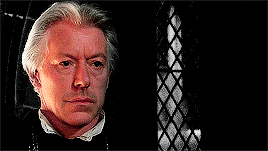
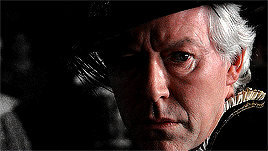





"To say that Thomas Boleyn and his children after him set out to be courtiers is, therefore, to say a great deal; they were taking the road to power, prestige and profit. Whether it was the road of honour is a different question, and most historians have felt that Anne's father personified all that was bad about the court. P.W. Sergeant's verdict that 'it is clearly hopeless to attempt a defence of Sir Thomas' may seem totally justified in case of a man who, on his way to an earldom, slipped, or appears to have slipped, two daughters in succession into the king's bed. Friedmann's judgement, 'mean and grasping', is certainly correct."
Ives, E. 2004. The Life and Death of Anne Boleyn: 'The Most Happy'
NICK DUNNING as THOMAS BOLEYN
in THE TUDORS (2007-2010)
#the tudors#thetudorsedit#thomas boleyn#nick dunning#boleyn#anneboleynedit#anne boleyn#tudor era#weloveperioddrama#onlyperioddramas#tudorerasource#period drama#house of tudor#mine#byfefa#HISTORY#ERIC IVES#usersjen#userzaynab#userbennet#valyrianpoem
141 notes
·
View notes
Text

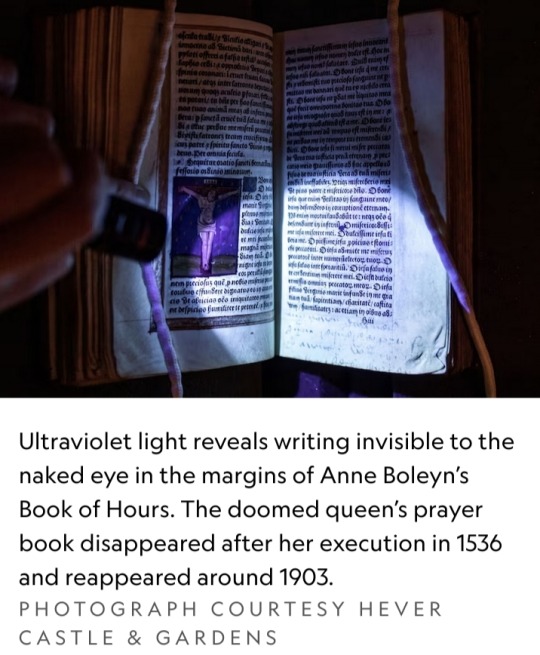
By Leslie Patrick
1 August 2023
Anne Boleyn (c. 1501 or 1507 – 19 May 1536), King Henry VIII's second queen, is often portrayed as a seductress and ultimately the woman responsible for changing the face of religion in England.
In reality, she was a fiercely intelligent and pious woman dedicated to education and religious reform.
But after her arrest and execution on false charges of adultery and incest in May 1536, Henry VIII was determined to forget her memory.
Her royal emblems were removed from palace walls, her sparkling jewels tucked away in dark coffers, and her precious books disappeared from the pages of time.
One of Boleyn’s books that has reappeared is the Book of Hours, a stunning prayer book, printed around 1527 with devotional texts designed to be read throughout the day, features hand-painted woodcuts — as well as a rare example of the queen’s own writing.
In the margins of one of the beautifully decorated pages, she penned a rhyming couplet followed by her signature:
“Remember me when you do pray, that hope doth lead from day to day, Anne Boleyn.”
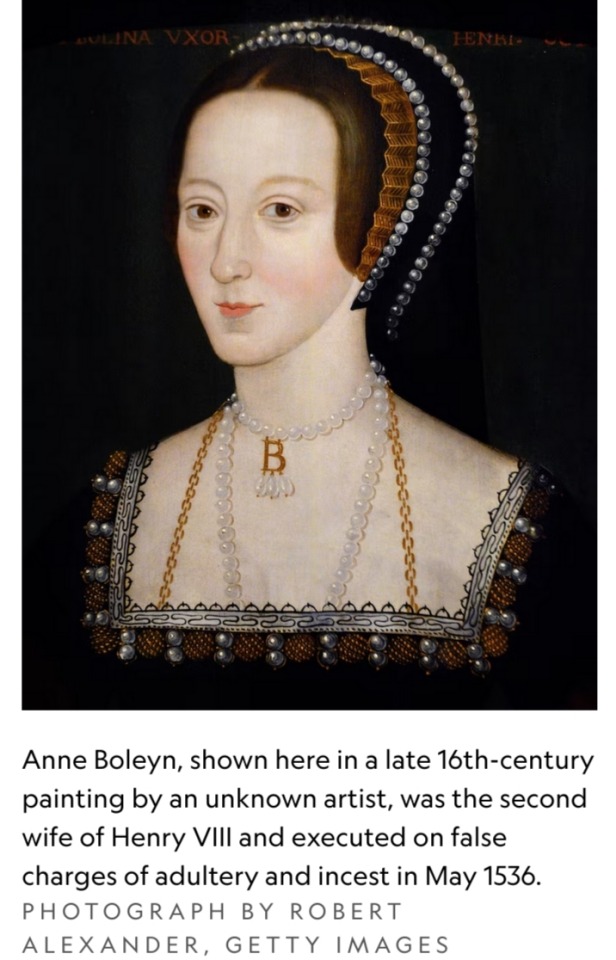
The book vanished with Boleyn’s execution in 1536, then resurfaced around 1903 when it was acquired by the American millionaire William Waldorf Astor (31 March 1848 – 18 October 1919) after he purchased Hever Castle, Anne Boleyn’s childhood home in the English countryside.
The hiding place of the disgraced queen’s devotional tome had been a mystery for centuries, until recent research by a university student uncovered hidden signatures that helped trace its path through history.
The discovery
The book’s whereabouts in the 367 years between Boleyn’s death and its reemergence remained puzzling until 2020 when Kate McCaffrey, then a graduate student at the University of Kent working on her master’s thesis about Anne Boleyn’s Book of Hours, found something unexpected in the margins of the book.
“I noticed what appeared to be smudges to the naked eye,” recalls McCaffrey, assistant curator at Hever Castle since 2021.
Intrigued, she borrowed an industrial-strength ultraviolet light and set it up in the darkest room of Hever Castle.
Ultraviolet light is often used to examine historical documents because ink absorbs the ultraviolet wavelength, causing it to appear darker against the page when exposed.
“The words just came through. It was incredible to see them underneath the light, they were completely illuminated,” the curator recalls.
McCaffrey’s theory is that the words were erased during the late Victorian era when it was popular to cleanse marginalia from books or manuscripts.
But thanks to her extraordinary detective work, these erased words turned out to be the key that unlocked the tale of the book’s secret journey from certain destruction at the royal court to safety in the hands of a dedicated group of Boleyn’s supporters.
The guardians
Indeed, various pages throughout the text reveal the names and notations of a string of Kentish women — Elizabeth Hill, Elizabeth Shirley, Mary Cheke, Philippa Gage, and Mary West — who banded together to safeguard Anne's precious book and keep her memory alive.
While it’s unclear how the book was initially passed to these women, Anne Boleyn expert Natalie Grueninger suggests it was gifted by Anne to a woman named Elizabeth Hill.
Elizabeth grew up near Hever Castle, and her husband, Richard Hill, was sergeant of the King’s Cellar at Henry VIII’s court.
There are records of the Hill’s playing cards with the king, and there may have been a friendship between Elizabeth and the queen that prompted Boleyn to pass her prayer book on before her execution.
“This extended Kentish family kept the book safe following Anne’s demise, which was an incredibly brave and bold act considering it could have been considered treasonous,” says Grueninger, podcaster and author of the book The Final Year of Anne Boleyn.
Anne’s Book of Hours was passed between mothers, daughters, sisters, and nieces until the late sixteenth century, when the last name makes its appearance in its margins.
“This story is an example of the women in the family prioritizing loyalty, friendship, fidelity, and a personal connection to Anne,” says McCaffrey.
“The fact that the women have kept it safe is a really beautiful story of solidarity, community, and bravery.”
The book, currently on display at Hever Castle, is a touchstone of the enigma that was Anne Boleyn.
Castle historian and assistant curator Owen Emmerson points out that the book contains Anne’s DNA on the pages from where she touched and kissed it during her daily devotions.
“This was a really beloved possession of hers,” says Emmerson.
“Because of what happened to Anne Boleyn, we don’t have a vast amount of information in Anne’s own words. But the physical remnants of her use of the book, and the construction of that beautiful little couplet, have her identity in them.”
While Anne’s Book of Hours has finally found its way home, the research into this intriguing historical mystery is not yet over.
McCaffrey continues to chart the book’s provenance through the centuries to find out where it was hiding all this time.
The discovery of the inscriptions illuminates the book’s furtive journey, providing us with a glimpse into the controversy, loyalty, and fascination that Anne Boleyn has engendered for the past 500 years.

#Anne Boleyn#King Henry VIII#Book of Hours#William Waldorf Astor#Hever Castle#Kate McCaffrey#University of Kent#ultraviolet light#Natalie Grueninger#Owen Emmerson#Elizabeth Hill#Elizabeth Shirley#Mary Cheke#Philippa Gage#Mary West#The Tudors#House of Tudor#British Royal Family
230 notes
·
View notes
Text
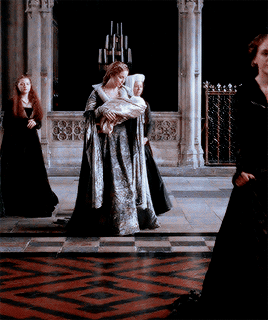



✧ "Elizabeth of York's responsibilities included acts of charity, keeping her household, and, of course, bearing heirs. As the queen of Henry Tudor, she had the additional charge of demonstrating support for him that would help unite the country and end the infighting between Lancaster and York. To this end, each appointment and gift had to be considered for the impression that it made. From the beginning of their marriage, Elizabeth accepted a submissive role, seeing it as her duty to God and country to support her husband.
Henry and Elizabeth agreed that her first concern was for children, and they were almost immediately blessed with their first. Prince Arthur was born a scant eight months after their marriage, so Elizabeth’s time as queen coincides with her time as a mother. Even before Arthur was born, she would have begun planning for his education and household. Elizabeth spent significant time directing the care of her children and participating in their life herself much more than many queens of her era. Still, her priority was Henry, and the two were seldom apart, even after separate households were set up for the children." — Samantha Wilcoxson
Jodie Comer as ELIZABETH OF YORK
in The White Princess (2017)
#elizabeth of york#henry vii#house of tudor#house of york#english history#history#tudor history#early modern history#15th century#historyedit#twpedit#the white princess#period drama#queens#thewhiteprincessedit#our gifs#our creations
75 notes
·
View notes
Text





#art#etching#european art#british history#historical#british monarchy#fine art prints#paolo mercuri#the execution of lady jane grey 1858#paul delaroche#hippolyte delaroche#lady jane grey#house of tudor
122 notes
·
View notes
Text

The Last Charge of Richard III
by Graham Turner
#richard iii#cavalry charge#england#wars of the roses#battle of bosworth#sir henry brandon#henry tudor#art#europe#european#history#medieval#middle ages#plantagenets#plantagenet#house of york#house of lancaster#house of tudor#english#king of england#king#monarch#crown#standard#knights#knight#armour#mace#lance#bosworth field
171 notes
·
View notes
Text

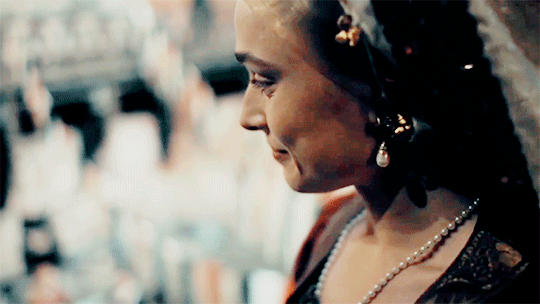



After the successful meeting with Henry VI, Margaret, Henry Stafford and Henry Tudor travelled to Woking. Margaret and her son spent a week together at her favourite residence, and it appears that this was treated as a holiday by them and a chance to get to know each other again. For Margaret, who had already spent a considerable time apart from her only child, such moments would have been precious, and after leaving Woking, the pair travelled slowly with Henry Stafford to Maidenhead and Henley-on-Thames before Margaret once again passed her son over to the control of his uncle. By 1471, Henry Tudor was rapidly approaching adulthood: he was already older than Margaret had been when she gave birth to him. Although it must have been a wrench for Margaret to part from her child once again, she recognised that it was time for the boy to make his way in the world and that his uncle, who had shown himself to have they boy’s best interests at heart, was, for the time being at least, the man best suited to be his guardian. (...) On 11 November, Henry bade his mother and stepfather farewell and joined his uncle Jasper. Though neither Margaret nor Henry could have known it, they would not see each other again for almost fifteen years. (x) (x)
#historyedit#henry tudor#margaret beaufort#jasper tudor#perioddramaedit#royal bastards: the rise of the tudors#margaretbeaufortedit#henry vii#house of tudor#mine: perioddrama#mine: gifs#mine: history#tudors#tudorsedit#margaret x jasper
194 notes
·
View notes
Text

Anthony van Dyck (Flemish/Spanish Netherlands, 1599-1641)
Princess Mary, Daughter of Charles I of England, ca.1637
Museum of Fine Arts Boston
#Anthony van Dyck#flemish#spanish netherlandish#1600s#art#royal#princess#fine art#european art#classical art#female portrait#female#portrait#portrait of a girl#Princess Mary#english princess#house of tudor#european history#europe#european#oil painting#fine arts#europa#island kingdom#england
62 notes
·
View notes
Text
This video has taught me just how complicated sourcing can be and how easily claims can become misinformation taken as fact. My ability to research and source feels so incredibly inferior. Its a good watch.
#sourcing#resources#research#youtube#I feel i should strive to be MUCH better#welsh history#wales#welsh#henry vii#house of tudor#british#medieval history#Cadwaladr#red dragon#flag of wales
48 notes
·
View notes
Text

Queen Elizabeth I by Willem Key.
53 notes
·
View notes
Text
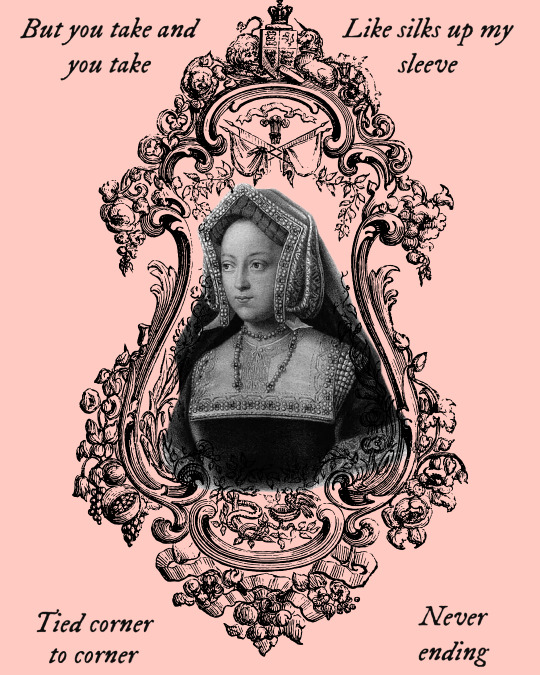
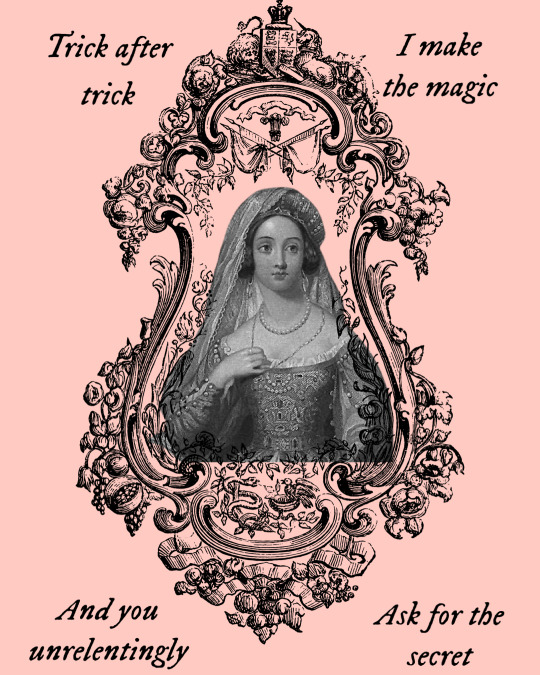
Salt in the Wound by boygenius x engravings of Queen Catherine of Aragon by unknown artists
#catherine of aragon#katherine of aragon#catalina de aragon#boygenius#boygenuis#phoebe bridgers#lucy dacus#julien baker#tudor history#henry viii#the tudors#english history#tudor era#tudor rose#tudor england#tudor period#house of tudor#16th century#sixteenth century#19th century art#19th century#engraving#lyrics#lyric edit#salt in the wound#nineteenth century#victorian era#art history#british history#history of art
133 notes
·
View notes
Note
Can you do Separately what The Yandere Tudors Men (Edward Seymour, King Henry VIII, Charles Brandon and Thomas Boleyn) would give their Wife a really, REALLY expensive necklace either as a wedding present, a just because present or something following the birth of one of their children?
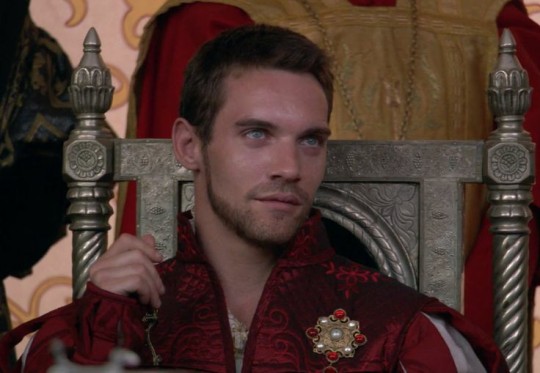
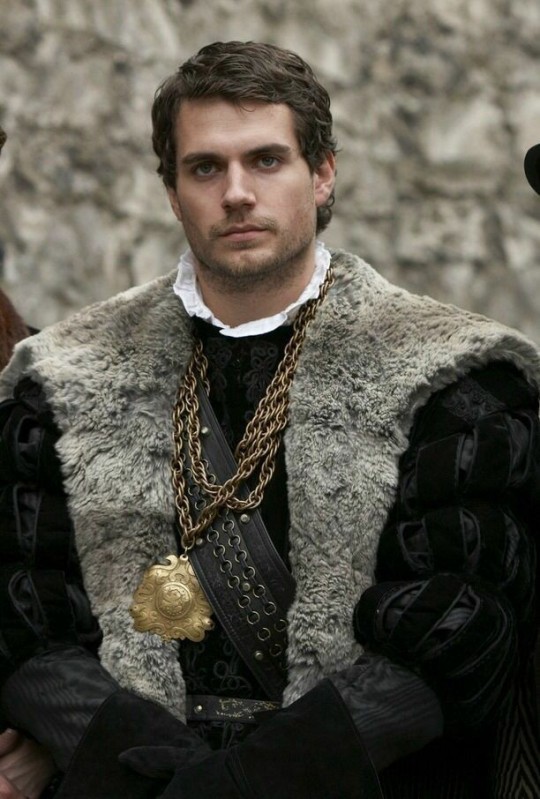
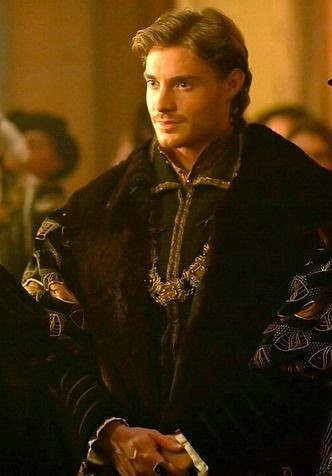
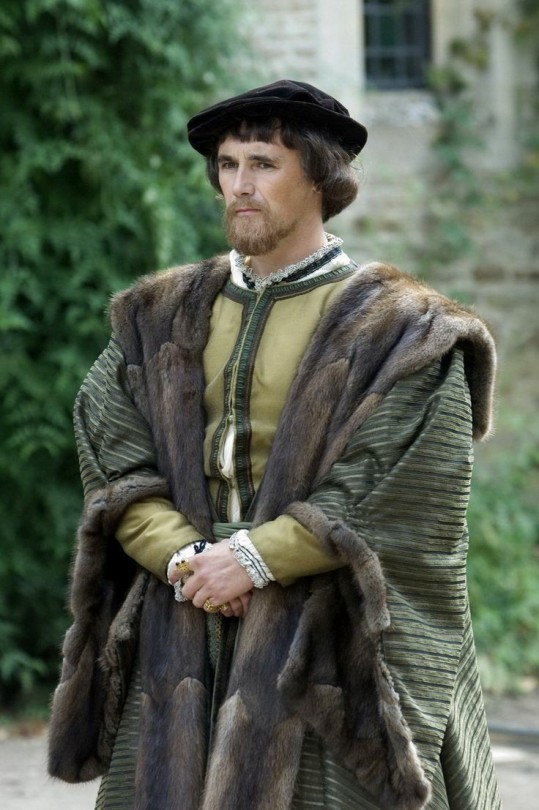
Hello. I hope you like it.
King Henry had passed many difficult trials to marry you. You will never forget the moments of lust and desire you experienced on your wedding night throughout your life. King Henry shed tears of joy when he received the news that you were pregnant. He took very close care of you throughout your pregnancy, unlike usual. Not even a minute was left outside the door of the room where you gave birth for hours. He was praying to God for you and the baby to be delivered safely. When the birth was finally over, he quickly entered the room. You were tiredly smiling at your husband with your newborn son in your arms.
"My King. We now have a male heir."
King Henry came to you and kissed your forehead. It wasn't hard to understand that he was happy and proud from the look on his face when he held your son in his arms.
"My son."
King Henry proudly kissed his newborn son's forehead.
"Our son's name will be Edward. Prince Edward."
You smiled at your husband's words. King Henry gently placed Prince Edward in his crib. He handed you the box in his hand. Surprised, you take the box and open it. Inside the box was a necklace decorated with Tudor symbol roses and made of expensive jewellery.
"My King. This is beautiful."
"Not as much as you."
King Henry took the necklace out of the box and placed it around your neck elegantly.
◇◇◇◇◇◇◇◇◇◇◇◇◇◇◇◇◇◇◇◇◇◇◇◇
You were Charles' third wife. Honestly, you never thought that an arranged marriage would turn into love. Charles was a possessive and passionate husband. Even though his love was suffocating at times, you had learned to cope. Charles did not yet have a son. This meant that a big task was on your shoulders. You got pregnant shortly after the wedding. You honestly thought your husband would move away from you and take mistresses. But it didn't happen as he thought. Months later, you gave birth to healthy twin boys. You would never forget the smile on Charles' face. He held his sons in his arms and wasn't afraid to talk about how proud he was. One of your sons was named John and the other Edmund. After naming the babies, Charles gave you a very dazzling necklace as a gift. From what you heard from your bridesmaids, Charles paid a really large amount of money for this necklace.
◇◇◇◇◇◇◇◇◇◇◇◇◇◇◇◇◇◇◇◇◇◇◇◇
Your wedding to Thomas Boleyn was modest. You came from a noble and powerful family. Frankly, your mother and father were not very keen on this marriage. After all, Thomas Boleyn did not promise great possibilities. After months of conversations, you had finally managed to gain your family's approval. You were getting ready in your room on the wedding night. Thomas slowly pokes his head through the door.
"I got you something, honey. Your wedding gift."
"There was no need, my dear. It is a great gift for me to know that we can spend our lives together now."
"My beautiful wife. I am truly a very lucky man."
Thomas holds out the box he keeps behind his back. You slowly take the box and open it. There is a really expensive necklace inside the box.
"Thomas. This is too expensive."
"I couldn't have a big wedding that suits you. I should have at least bought you a gift that suits you."
"Thank you, Thomas. I will keep this necklace for the rest of my life."
◇◇◇◇◇◇◇◇◇◇◇◇◇◇◇◇◇◇◇◇◇◇◇◇
Your wedding to Edward Seymour was beautiful. It was literally like a fairy tale. Queen Jane had spared no expense for her brother's wedding. The wedding hall was decorated very beautifully. A luxurious wedding dress and a wonderful flower bouquet were prepared. After you put on your wedding dress, the bridesmaids did your make-up and hair. You were waiting for the ceremony to start. There is a knock on your door.
"Come in."
Edward comes in. Edward has a look of admiration on his face.
"Oh my God. You look like an angel."
"Edward, you're embarrassing me."
"I came to give you a gift. I hope you like it."
When you open the box, you are surprised to see the expensive necklace inside.
"Oh. Edward, that's beautiful."
"I'm glad you liked it, my beautiful."
#yandere the tudors#house of tudor#yandere tudors#yandere tudors characters#the tudors#yandere edward seymour#yandere edward seymour x reader#yandere charles brandon#yandere charles brandon xreader#yandere thomas boleyn#yandere thomas boleyn x reader#yandere henry viii#yandere henry viii x reader#yandere king henry viii#yandere historycal characters#yandere male
134 notes
·
View notes
Text




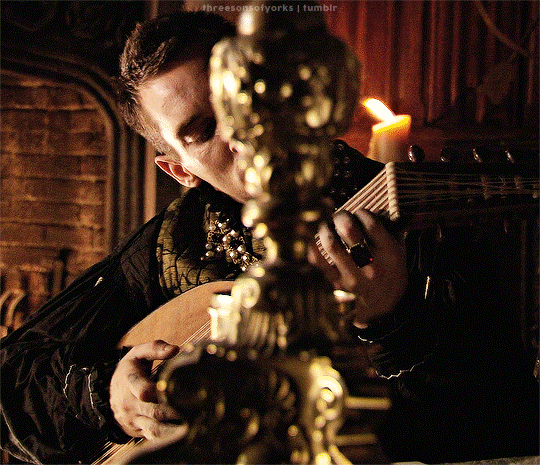
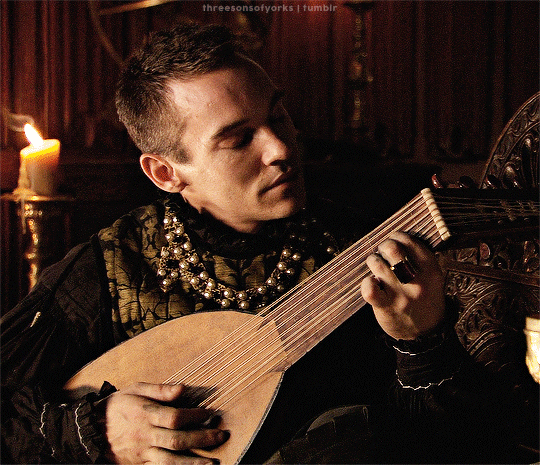
King Henry VIII Composing Greensleeves
THE TUDORS (2007- 2010) | 1x09 "Look to God"
#the tudors#henry viii#king henry viii#jonathan rhys meyers#tudor history#periodramaedit#onlyperioddramas#weloveperioddrama#house of tudor#userlenna#usersjen#valyrianpoem#tusergabriela#userzil#tudorerasource#tvgifs#televisiongifs#henryviiiedit#thetudorsedit#mine#byfefa
130 notes
·
View notes
Text




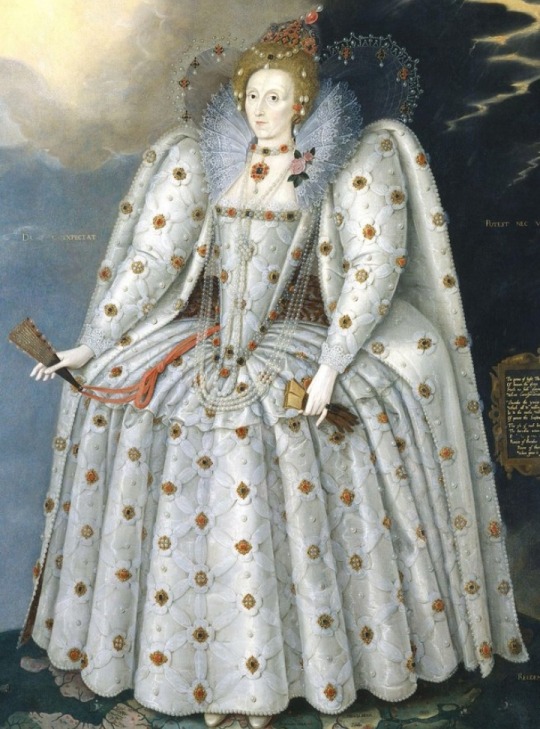
BORN ON THIS DAY:
Elizabeth I (7 September 1533 – 24 March 1603) was Queen of England and Ireland from 17 November 1558 until her death in 1603.
Elizabeth was the last monarch of the House of Tudor and is sometimes referred to as the "Virgin Queen."
66 notes
·
View notes
Text
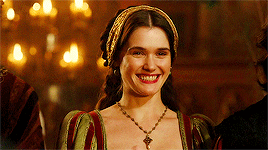



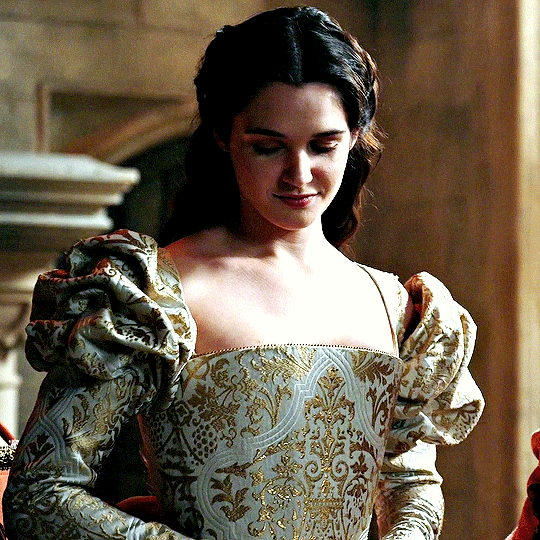
From Princess, to Queen, to Duchess
Mary Tudor (March, c. 1496; London, England - June, 1533; Suffolk, England) was an English princess, the third wife of King Louis XII of France and one of the two sisters of King Henry VIII. Mary was also the grandmother of Lady Jane Grey, who would become titular queen of England for nine days in 1553.
Mary’s father, King Henry VII, betrothed her to Archduke Charles —later Holy Roman Emperor, Charles V — in 1507. In 1514, however, political tribulations caused King Henry VIII to renounce such engagement and arrange a match between his beautiful, charming and yound sister and Louis XII, the sick and french monarch of 52. Since Mary was already in love with Charles Brandon, the first Duke of Suffolk, she made Henry promise that after Louis died she would be allowed to choose her next husband.
The marriage with the french king took place on Octouber of 1514, and Mary performed her role as wife and royal consort with kindness and dedication until he died on January of the following year. Before Henry or the new King of France, Francis I, could use her as a pawn in another political arrangement, Mary secretly wed Suffolk in Paris, probably in late February. Henry VIII was infuriated at the news, but eventually the pair regained the king’s favour, with Suffolk paying him a large sum of money and perhaps with the help and intercession of Cardinal Wolsey.Mary and Charles had four children, two daughters and two sons:
⇒ Henry Brandon (11 March 1516 – 1522);
⇒ Lady Frances Brandon (16 July 1517 – 20 November 1559), married to Henry Grey, 3rd Marquess of Dorset, and mother to Lady Jane Grey;
⇒ Lady Eleanor Brandon (1519 – 27 September 1547), married to Henry Clifford, 2nd Earl of Cumberland;
⇒ Henry Brandon, 1st Earl of Lincoln (c. 1523 – March 1534).
Mary had enjoyed unprecedented freedom during her teenage years at her brother's court. Just fourteen when her father, Henry VII died, she spent the next five years almost completely unchaperoned, encouraged to participate in every event, celebration and feast, each planned to display the opulence of the english royal family. She shared Henry's exuberance for spectacle and, for some time, was one of the central ladies of the court, admired and sociable. Like him, she loved dancing, masques, and parties; they were also very close, with the princess being the apple of the king's eye. It's rumored that Henry's famous warship, the Mary Rose, was named after both his favorite sister and his only daughter with Catherine of Aragon.
Upon her arrival in France, Mary was proclamed, by the Venetian Ambassador, to be "handsome and well favoured, grey-eyed; slight, rather than defective from corpulence, and conducts herself with so much grace, and has such good manners, that for her age of 18 years—and she does not look more—she is a paradise." She was particularly admired by her contemporaries for her long red hair, which she had inherited from the Plantagenet lineage through her mother, Elizabeth of York, who had also been an celebrated beauty.
After her second marriage, the Duchess of Suffolk lived a quiet life in the country, retired from court, although she had been know to have attended the famous Field of the Cloth of Gold at Guines, near Calais, in 1520. Often referred to as the French Queen, she was known to dislike Anne Boleyn and in defiance of her brother was to prove a firm supporter of her sister-in-law, Catherine of Aragon, in the matter of Henry VIII's annulment of his marriage to his first wife.
Mary visited London for the last time to celebrate the wedding of her eldest daughter, Lady Frances Brandon, to Henry Grey, Marquess of Dorset, in 1533. After suffering failing health for some years, Mary Tudor died on 25 June 1533 at the age of thirty-eight at Westhorpe Hall, Westhorpe, Suffolk, possibly of cancer. Henry VIII had requiem masses sung at Westminster Abbey for the repose of her soul and she was given a magnificent funeral, which her husband did not attend. Her body was interred at the Abbey of Bury St Edmunds. The Duke of Suffolk quickly remarried again, in that same year, to his fourteen-year-old ward, Katherine Willoughby (1519–1580), suo jure Baroness Willoughby de Eresby. Katherine had been betrothed to his eldest surviving son, Henry, Earl of Lincoln, but the boy was too young to marry, and Charles, to eager to add the heiress fourtune to his own.
#tudor dynasty#tudor queens#tudor history#tudor era#tudorqueens#the tudors#mary tudor#henry viii#elizabeth of york#charles brandon#tudor england#tudor period#tudor women#english royalty#house of tudor#medieval england#english history
31 notes
·
View notes